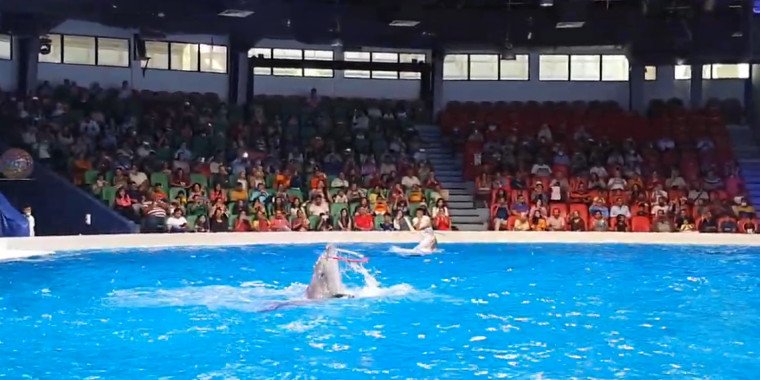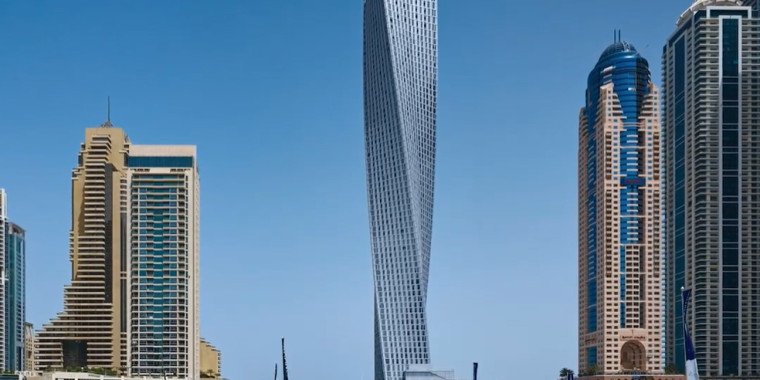
- On 11 Mar 2025
- In Travel
Discover Old Dubai – A Walk Through Bur Dubai’s Heritage
Bur Dubai: The Old City of Dubai`s Heart
Bur Dubai is located on the west bank of Dubai Creek and is known as the historic heart of Dubai. Before the modern skyline, this area was a busy center of trade and tradition. Bur Dubai gives you a rare look at the city`s roots with its meandering alleys, famous wind towers, busy souks, and history museums. Walking around here is like entering a living museum where you can really sense the beauty of Old Dubai.
The Early Days of Dubai Creek
Dubai Creek was the lifeline of early inhabitants long before there were skyscrapers and luxury resorts. Merchants, fisherman, and pearl divers built their residences here and used wind towers to keep the insides cool. Bazaars thrived along the waterfront, making it a busy market where people exchanged products from all over the area. Even now, walking through this area brings back memories of strength and business acumen.
The Legacy of Trade and Pearling
Bur Dubai grew into a
busy port city known for pearl diving and trade with nearby areas. Merchants from
Gujarat and Iran brought colorful fabrics, rare spices, and valuable pearls to
Dubai, which made its economy and culture better. Dubai is a melting pot of
cultures, as seen in its architecture, food, and markets. This cosmopolitan mix
helped make it what it is today.
Bur Dubai`s Best Attractions
Al Fahidi Fort and Dubai Museum
Dubai Museum is a
must-see for history buffs. It is located in a fort that was erected in the
late 1700s. There are full-size dioramas inside that show pearl diving, living
in the desert, and how people traded long ago. Artefacts, antique maps, and
archeological artifacts tell the story of how Dubai went from a modest fishing
village to a global powerhouse. Walking around the fort`s watchtowers and
courtyards makes the historical experience feel more exciting.
The Al Bastakiya Quarter
This lovely area, also
called the Al Fahidi Historical Neighborhood, is full of tiny alleys with
renovated houses. It has historic wind towers, art galleries, and quiet
courtyards that give it the feel of Dubai in the 19th century. There are cafés
buried in these courtyards that serve Arabic coffee and Emirati pastries. This
makes it a great place to relax and learn about history.
Cultural Center of Sheikh Mohammed
This cultural center has
guided tours and traditional Emirati meals that are served in a group setting.
Emirati hosts teach guests about local culture, history, and Arabic vocabulary.
People who want to learn more about Dubai`s culture will enjoy the interactive
Q&A sessions.
Textile Souk and Meena Bazaar
People know the busy
Meena Bazaar and Textile Souk for their bright fabrics, spices, gold jewelry,
and street cuisine. Walking through these busy streets will make you feel like
you`re in Old Dubai`s trading days, with all the sights, sounds, and smells.
You can have freshly fried samosas or spiced tea while you buy, and haggling is
part of the experience.
Dubai Creek Abra Ride
Taking a classic wooden abra boat across Dubai Creek is one of the most real things you can do in the city. This five-minute journey for just one dirham connects Bur Dubai and Deira and gives you a great view of the shoreline, old dhows, and historic buildings along the creekside. It`s a calm way to see how Dubai mixes the old and the new.
Things to Do That Are Culturally Interesting
Cafés and food from the past
There are cafés in Al
Bastakiya and Al Seef that serve Emirati food including al-machboos, balaleet,
and sweet luqaimat. Many include traditional decor, such roofs made of palm
fronds and clay ovens. Evening trips are especially lovely when lanterns light
up the courtyards and live oud music makes you feel nostalgic.
Art Galleries & Handicrafts
The rebuilt courtyard
houses in Bur Dubai now have modest galleries and craft shops. These show off
traditional crafts from the UAE, like pottery and weaving, as well as
calligraphy and photography. Going to these galleries helps local artists and
gives you a chance to buy real handmade gifts.
Calligraphy and Workshops
Visitors can attempt Arabic calligraphy, henna painting, and crafts at a number of cultural centers in Bur Dubai. These seminars are taught by professional artisans who share their own experiences and expertise. This is a rare chance to learn from local experts.
When to Go and How to Visit
Walking trips are fun in
Dubai`s cooler months (November to March), when the temperature is around
20–30°C during the day. The mornings are tranquil and wonderful for taking
pictures, while the late afternoons have golden sunlight and nice breezes in
the evening.
Rules and Dress Code
Bur Dubai has a classic
feel, thus it`s best to wear modest clothes. When going into mosques, both men
and women should cover their shoulders and knees. You can usually take
pictures, but it`s courteous to ask before snapping pictures of people.
Secret Treasures Close by is the Al Seef
District.
Al Seef runs along the
Creek and combines modern conveniences with traditional architecture. Wooden
dhows, lantern-lit walkways, cafés by the water, and craft shops make it a
beautiful extension of your Old Dubai trip.
The Sheikh Saeed`s House and the Al Shindagha
Museum
This magnificently
renovated royal residence gives visitors an interesting look into Dubai`s past
rulers and maritime history. Some of the exhibits are unique jewelry, old
coins, and maps that demonstrate how Dubai has changed throughout the years.
The Grand Mosque and the Jameel Arts House
The Grand Mosque, with
its beautiful architecture and tall minarets, is a symbol of faith and culture.
Jameel House of Traditional Arts is close by and conducts workshops and
exhibitions where you can observe historical crafts being conserved and
developed.
Conclusion: Dive into Dubai’s Past
Bur Dubai encourages you
to take your time and delve deeper into the rich history of the city. As you
stroll through residences adorned with wind towers, vibrant markets, and serene
waterfronts, you will encounter tales of commerce, heritage, and transformation.
A leisurely stroll to Al Seef and Shindagha will provide you with an
opportunity to delve deeper into the fascinating and rich history of Dubai. Bur
Dubai offers a genuine and memorable glimpse into the rich history of Dubai,
whether you choose to embark on a guided cultural tour or venture out to
explore independently.
Common Questions
1. What`s the best way
to walk around Bur Dubai?
Begin at the Dubai
Museum/Al Fahidi Fort, walk through Al Bastakiya, check out the galleries, and
then follow the Creek promenade to Al Seef.
2. How much does it cost
to get into the Dubai Museum?
The price of tickets is
AED 3–5 (around USD 1–2), thus it`s a cheap place for everyone to stop.
3. Do cultural trips
come with food?
Yes, the Sheikh Mohammed
Centre has guided cultural events and traditional Emirati meals.
4. Are there mosques in
Bur Dubai that I can visit?
Yes, you can have a
guided tour of the Grand Mosque. Before approaching prayer locations, take off
your shoes and dress modestly.
5. Do people often
haggle in Meena Bazaar?
Of course. It`s normal
to haggle over costs, and it makes shopping more exciting.
6. How long should you
spend in Bur Dubai?
If you wish to see Al
Seef and Shindagha also, plan on spending a full day there. Otherwise, plan on
spending at least three to four hours there.


